Please find our most recent market review below. We hope these perspectives are valuable to you.
– The AdvicePeriod Team
Rising Yields, Strong Growth
Consumer and Government Spending Bolster Growth
The strength of the economy and speculation over the election weigh on the bond market
Key Observations
- The S&P 500 pulled back 0.9% in October, remaining up 21% in 2024.
- International developed markets dropped nearly 5.5% for the month.
- Mid-caps outperformed large and small caps, losing only 0.5% for the month.
- Facing rising yields, bonds fell 2.5%.
Market Recap

While the U.S. stock market edged lower by 0.91% in October, it remains up nearly 21% year to date. The materials sector was the primary drag on performance, while financials emerged as the month’s top performer. Small-cap stocks lagged, dropping 1.4%, while mid-caps outperformed both large caps and small caps, slipping 0.54% for the month. Non-U.S. developed stocks fell significantly, declining 5.4% and underperforming the U.S. by a wide margin as they faced headwinds from a stronger U.S. dollar. Emerging markets fared slightly better, losing 4.5% for the month. The Bloomberg U.S. Aggregate Bond Index dropped 2.5% in October while the 10-year Treasury yield began the month at 3.74% and rapidly rose to 4.36% by month-end. Yields on the 2-year Treasury increased significantly as well, starting at 3.62% and ending the month at 4.20%.
Bond Market Woes
October saw the worst bond market sell-off in six months as stronger-than-expected economic data fueled concerns about the pace of future Federal Reserve (Fed) rate cuts. Political speculation also weighed on the bond market, with some investors anticipating a potential Trump victory. The prospect of tax cuts and tariffs under a second Trump administration has stoked inflation fears, further pushing up rates. Last month, the Fed started its easing cycle with a 50-basis-point (bps) move, and many expected Fed policymakers to continue to cut rapidly. The market is pricing in an 80% chance that the Fed will cut rates by 25 bps on November 7. After that, the market is expecting the Fed not to cut in its following two meetings.
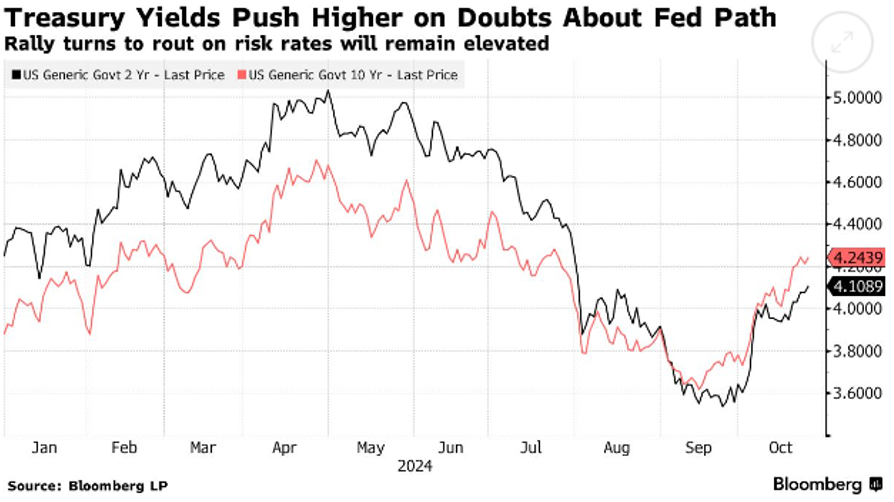
Strength of the U.S. Economy
According to initial estimates, the U.S. economy continued to expand at a healthy pace in the third quarter, with inflation-adjusted gross domestic product (GDP) increasing at a 2.8% rate. This is slightly slower than the second quarter’s 3% pace and below economists’ expectations of a 3.1% increase. Even so, it is a continuation of a two-year period characterized by high U.S. economic growth and high borrowing costs. During previous economic expansions, from Q2 2009 through Q4 2019, GDP increased on average at an annual rate of 2.5%.
Economic growth continues to be driven by consumers supported by a strong labor market and steady business investment. Their spending drove the increase and continues to be the largest contributor to economic activity. This is the fastest rate of consumer spending growth since early 2023 and was due to robust spending on autos, household furnishings and recreational items.
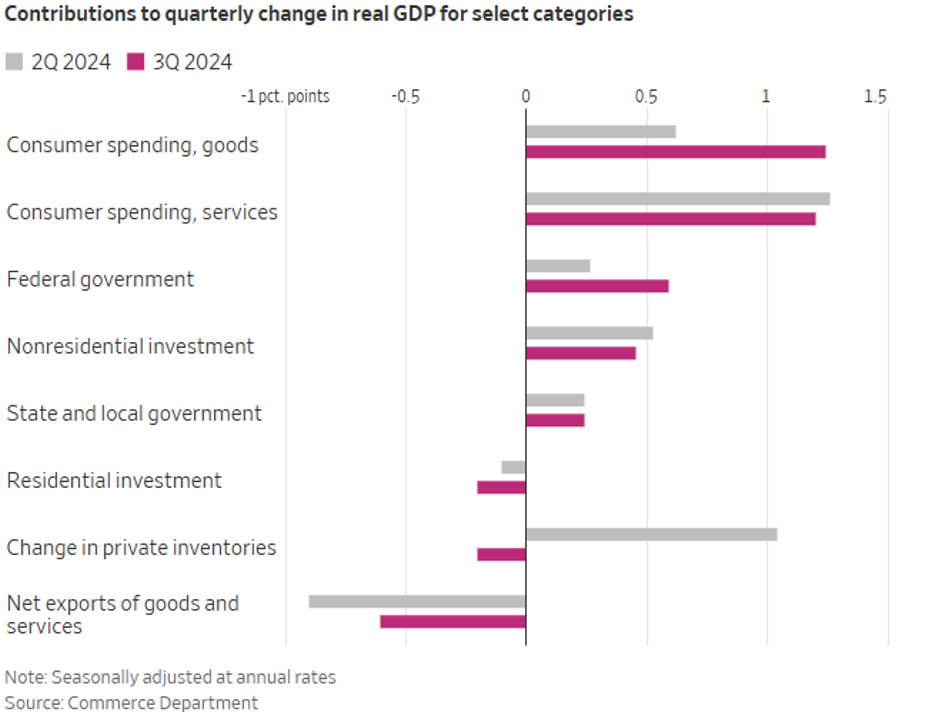
Government spending increased in the third quarter, driven by national defense expenditures, which surged 14.9%, the highest rate since 2003. Additionally, government spending excluding defense rose at the fastest pace in a year. Nonresidential investment slowed to its lowest level in a year, held back by spending on structures. Residential investment slowed at its fastest rate since late 2022 due to the housing market, which continued to be weighed down by higher mortgage rates and prices. Impacts from Hurricanes Helene and Milton will likely affect data in the fourth quarter and beyond.
Disclosures:
This market commentary is meant for informational and educational purposes only and does not consider any individual personal considerations. As such, the information contained herein is not intended to be personal investment advice or recommendation. References to specific asset classes and securities are for illustrative purposes only and are not intended to be, and should not be interpreted as, recommendations to purchase or sell any securities or assets classes.
The commentary represents an assessment of the market environment through October 2024. The views and opinions expressed may change based on the market or other conditions. The forward-looking statements are based on certain assumptions, but there can be no assurance that forward-looking statements will materialize. This commentary was written and provided by an unaffiliated third party; we cannot guarantee the accuracy or completeness of any statements or data contained herein.
Indexes are unmanaged and cannot be directly invested into. Past performance is no indication of future results. Investing involves risk and the potential to lose principal.
AdvicePeriod is another business name and brand utilized by both Mariner, LLC and Mariner Platform Solutions, LLC, each of which is an SEC registered investment adviser. Registration of an investment adviser does not imply a certain level of skill or training. Each firm is in compliance with the current notice filing requirements imposed upon SEC registered investment advisers by those states in which each firm maintains clients. Each firm may only transact business in those states in which it is notice filed or qualifies for an exemption or exclusion from notice filing requirements. Any subsequent, direct communication by an advisor with a prospective client shall be conducted by a representative that is either registered or qualifies for an exemption or exclusion from registration in the state where the prospective client resides. For additional information about Mariner, LLC or Mariner Platform Solutions, LLC, including fees and services, please contact us utilizing the contact information provided herein or refer to the Investment Adviser Public Disclosure website (www.adviserinfo.sec.gov). Please read the disclosure statement carefully before you invest or send money.
For additional information as to which entity your adviser is registered as an investment adviser representative, please refer to the Investment Adviser Public Disclosure website (www.adviserinfo.sec.gov) or the Form ADV 2B provided to you. Investment adviser representatives of Mariner, LLC dba Mariner Wealth Advisors and dba AdvicePeriod are generally employed by Mariner Wealth Advisors, LLC. Investment adviser representatives of Mariner Platform Solutions, LLC dba AdvicePeriod, are independent contractors.
Index Definitions: The S&P 500 is a capitalization-weighted index designed to measure the performance of the broad domestic economy through changes in the aggregate market value of 500 stocks representing all major industries. Russell 2000 consists of the 2,000 smallest U.S. companies in the Russell 3000 index. MSCI EAFE is an equity index which captures large and mid-cap representation across Developed Markets countries around the world, excluding the U.S. and Canada. The index covers approximately 85% of the free float-adjusted market capitalization in each country. MSCI Emerging Markets captures large and mid-cap representation across Emerging Markets countries. The index covers approximately 85% of the free-float adjusted market capitalization in each country. Bloomberg U.S. Aggregate Index covers the U.S. investment grade fixed rate bond market, with index components for government and corporate securities, mortgage pass-through securities, and asset-backed securities. Bloomberg U.S. Corporate High Yield Index covers the universe of fixed rate, non-investment grade debt. Eurobonds and debt issues from countries designated as emerging markets (sovereign rating of Baa1/BBB+/BBB+ and below using the middle of Moody’s, S&P, and Fitch) are excluded, but Canadian and global bonds (SEC registered) of issuers in non-EMG countries are included. FTSE NAREIT Equity REITs Index contains all Equity REITs not designed as Timber REITs or Infrastructure REITs. Bloomberg Commodity Index is calculated on an excess return basis and reflects commodity futures price movements. The index rebalances annually weighted 2/3 by trading volume, and 1/3 by world production and weight-caps are applied at the commodity, sector, and group level for diversification.
Does past performance matter?
Major Market Index Returns
Period Ending 11/1/2024
Multi-year returns are annualized.

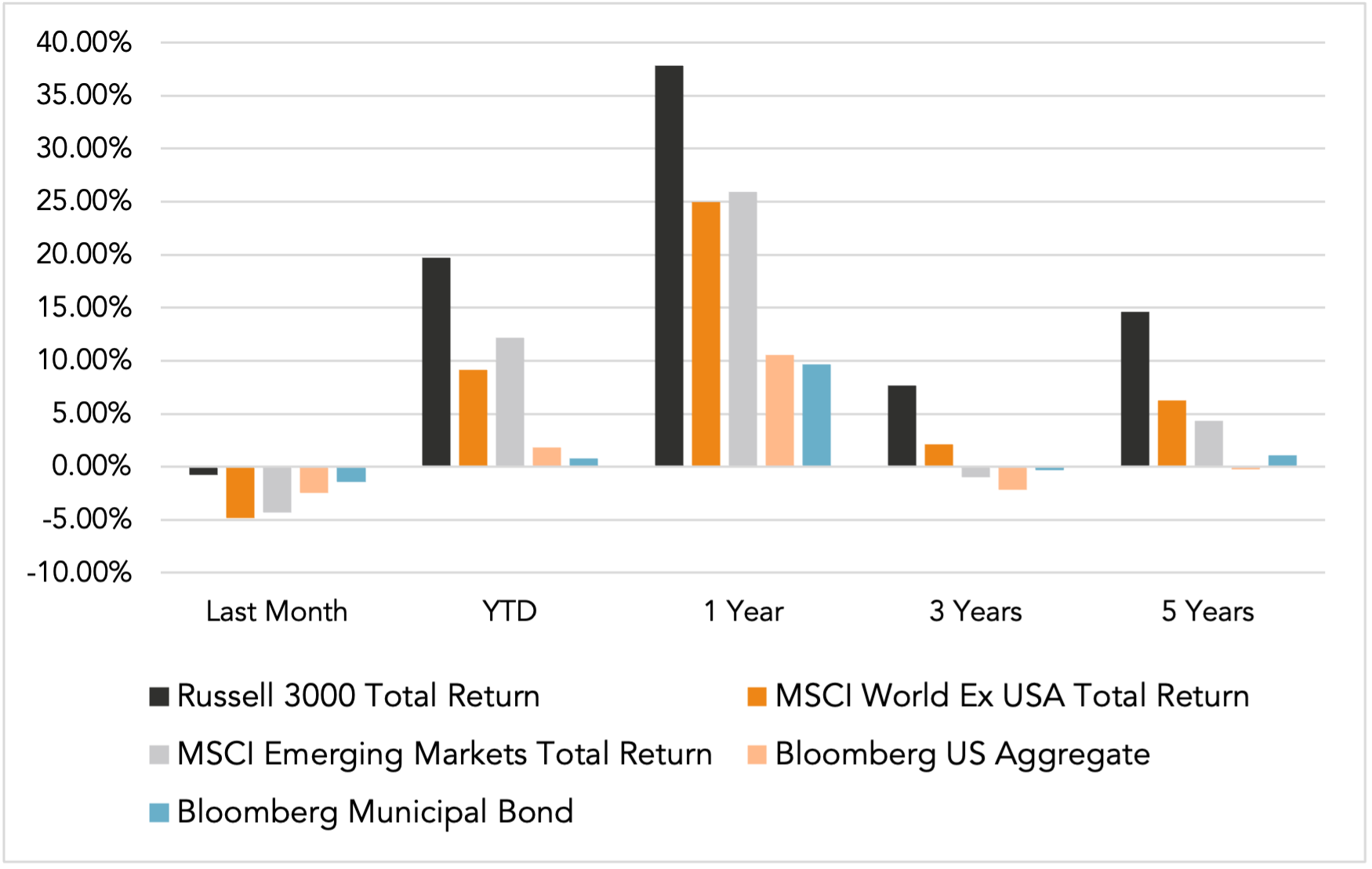
Mix Index Returns
Global Equity / US Taxable Bonds

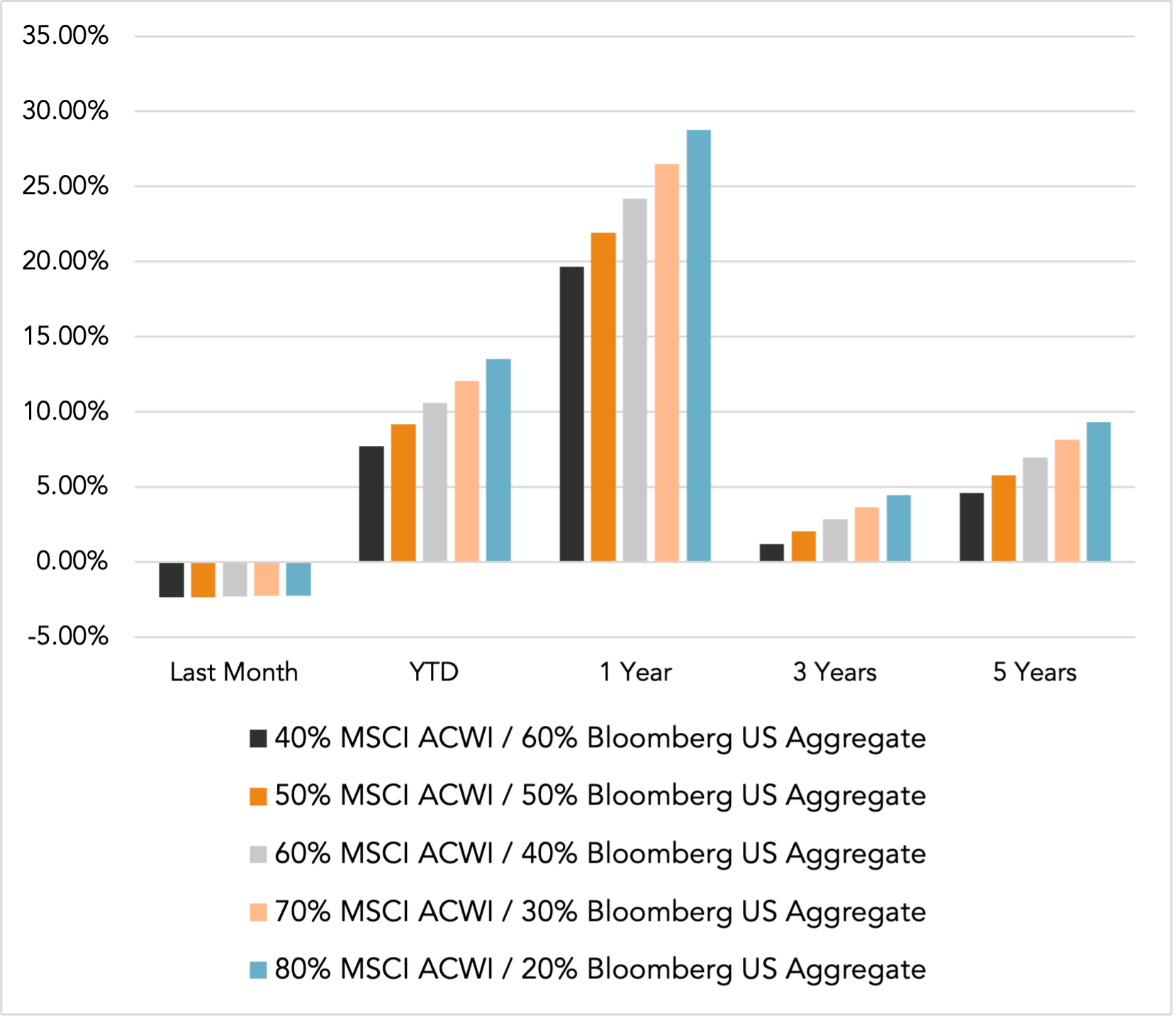
Indexes are unmanaged and cannot be directly invested into. Past performance is no indication of future results. Investing involves risk and the potential to lose principal.
The Russell 3000 Index is a United States market index that tracks the 3000 largest companies. MSCI Emerging Markets Index is a broad market cap-weighted Index showing the performance of equities across 23 emerging market countries defined as emerging markets by MSCI. MSCI ACWI ex-U.S. Index is a free-float adjusted market capitalization-weighted index that is designed to measure the equity market performance of developed and emerging markets excluding companies based in the United States. Bloomberg U.S. Aggregate Bond Index represents the investment-grade, U.S. dollar-denominated, fixed-rate taxable bond market, including Treasuries, government-related and corporate securities, as well as mortgage and asset-backed securities. Bloomberg Municipal Index is the US Municipal Index that covers the US dollar-denominated long-term tax-exempt bond market. The index has four main sectors: state and local general obligation bonds, revenue bonds, insured bonds, and prerefunded bonds.

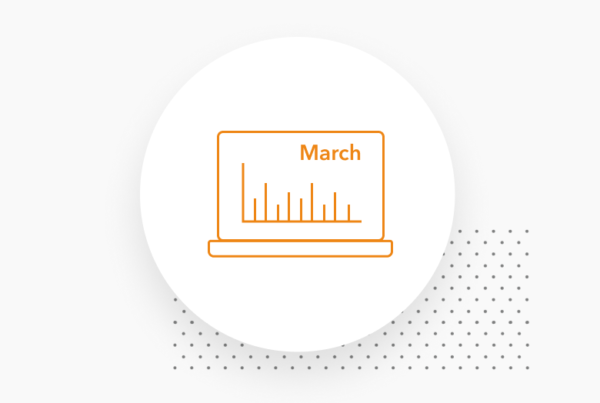
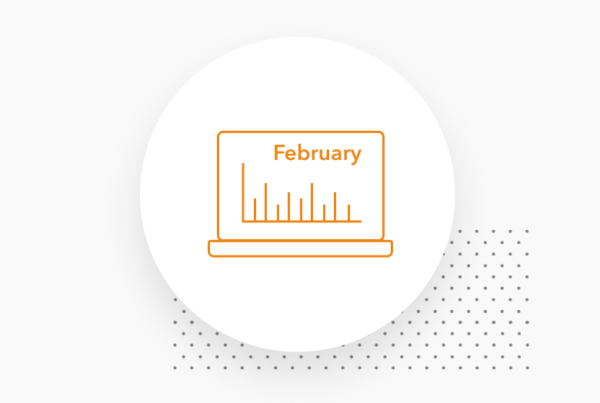

Market Update: March 2025 In Review